The early post-war period was one of turmoil for publishers of Canadian comics. Montreal’s Educational Projects didn’t even make it into 1946. The last issue of Canadian Heroes carried the cover date of October 1945. The reasons why Educational Projects closed its doors a year before the other three main Canadian publishers is not clear, but Joseph Halperin was the first of the Canadian comic book czars to realize that a Canadian comic book industry—at least his brand of factual and educational comics—was no longer sustainable in direct competition with American product. American comics were back into the fray with a vengeance and started shoulder-checking our remaining franchises into the boards at every opportunity. Bell Features, Maple Leaf Publishing, and Anglo-American all staggered on into that first Canadian comic twilight for about another year before capitulating.
Anglo-American made very little change to its line-up and format through this period. It did drop its Fawcett related titles by the end of 1945, but it had already gone full-colour with Canadian original material books since early 1945. Also, by the summer of 1945, Anglo-American seems to have begun distributing some of its Canadian titles in the US, perhaps through an arrangement with Fawcett. Take a look at this Captain Marvel Club newsletter from August 1945:
During the summer of 1946, Anglo-American even started printing some of its issues in the United States. If you have some of their 1946 titles, take a look at the indicia and see if the book was printed in Toronto or Cleveland. Some of you will remember that Harlan Ellison fondly recalled encountering some Anglo-American books during his Cleveland childhood in his Foreword to John Bell’s 1986 Canuck Comics. It still has to be determined which of these two printings, the Toronto or the Cleveland, is the scarcer.
For its last year, Maple Leaf started moving towards funny animal and cartoon features. In the last issue of Rocket Comics (No. 30 Sept-Oct 1946), for example, of the six feature stories, the only ones that are not funny animal are “Bush Pilot” and the John Stables’ cartoony “Piltdown Pete,” which is semi-funny animal it itself.
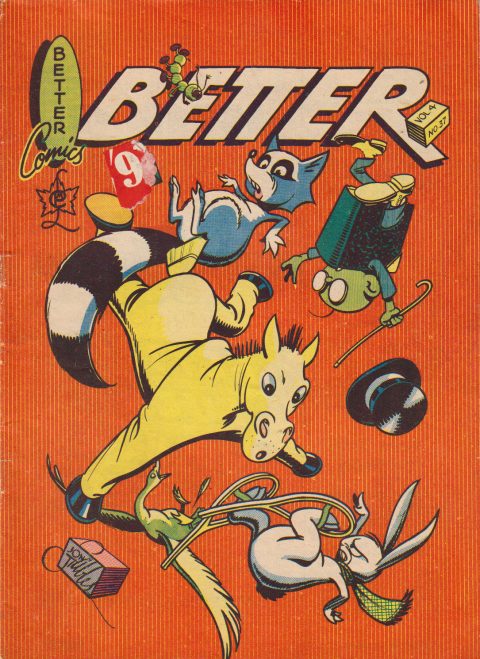
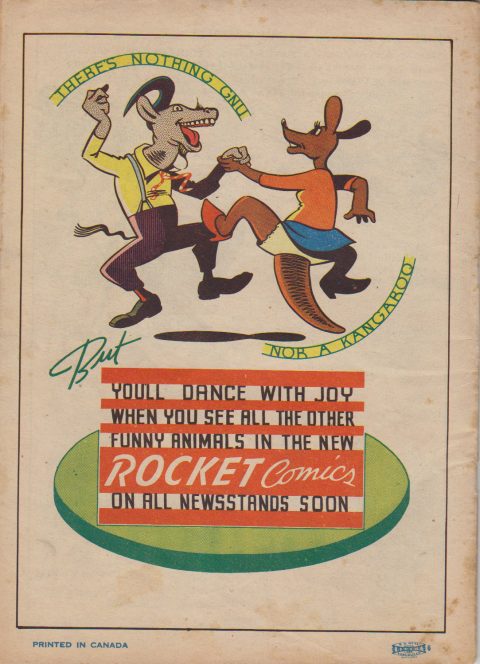
They also started a couple of new purely science fiction features such as “Quest for the Solar Star” in the final couple of issues of Better Comics and “Tur Hozak” in the last few issues of Bing Bang Comics. More research needs to be done into what specifically happened to Maple Leaf books in their last year, but the scarcity of available issues and general lack of information about the company is holding this back.
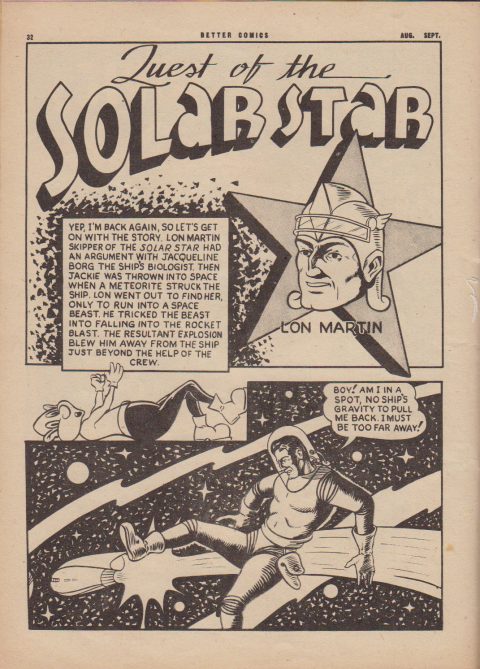
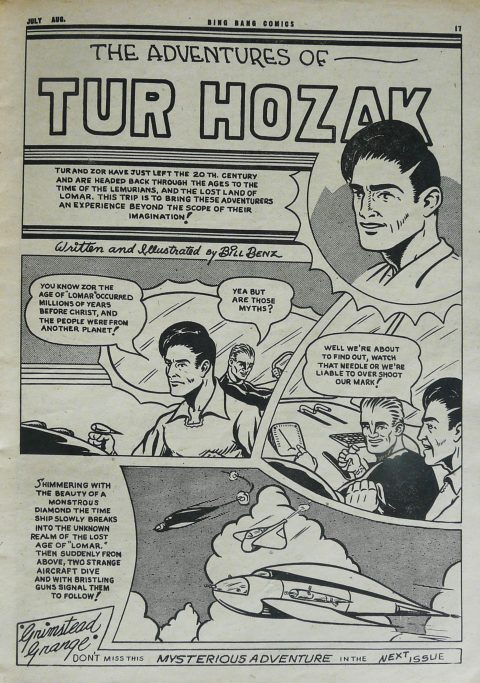
In this post, I want to look at Cy Bell’s Bell Features Publications and what this Toronto company did with the final few original Canadian content issues of each of its titles. Since the fall of 1942 Bell had been putting seven successful titles on newsstands across the country. They were Active Comics, Commando Comics, Dime Comics, The Funny Comics, Joke Comics, Triumph Comics, and, the title that launched the company, Wow Comics. The Funny Comics were Manny Easson’s one-man-show featuring Dizzy Don and really changed little. What Manny did do was to part company with Bell Features after issue 20 of the title. He started up his own company, Dizzy Don Enterprises and changed the comic’s title to Dizzy Don Comics. He put out issues 21 and 22 and then tried to market the character and the title below the border.
In this final year, Bell also lost mainstay creator Leo Bachle (Johnny Canuck, The Brain, Invisible Commando…) to a better salary below the border and to his dream of being a nightclub comedian. A number of others who had served overseas didn’t return to the company after the war.
One thing that all the Canadian comic book publishers, including Bell Features, had to face was the fact that the war, the engine that had driven the stories, characters, and cover art—and, in fact, created our Canadian comics—was no longer there. Air aces became test pilots and commandos became private eyes or worked as counter-espionage for some arm of the United Nations. Costumed heroes no longer had the drooling caricature of the Axis as the easy go-to villain that their creators had relied on for the previous five years. They now had to battle underworld or otherworld enemies such as crime lords, aliens, and supernatural creatures.
Despite all of this, Cy Bell’s mood at the end of 1945 seemed to be a positive one that looked ahead to the new possibilities for his comic book line. Here is an announcement he made in Dime Comics 27, the penultimate issue of that title to contain original and non-reprint material.
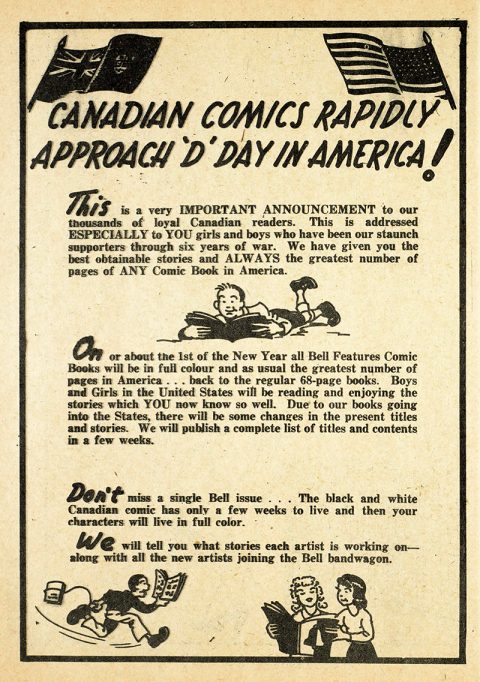
However, let’s take a closer look at what was going in those final original material issues of Active, Commando, Dime, Joke, Triumph, and Wow Comics. Generally, these last original material issues are harder to find than the rest of the run for each title. Perhaps print runs were diminished.
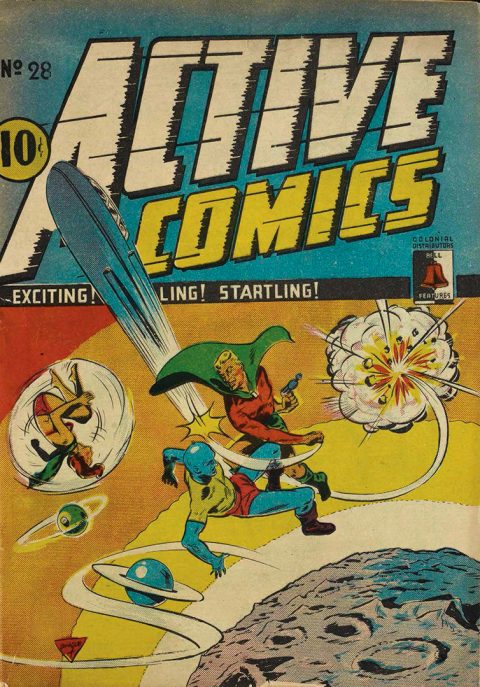
Active Comics No. 28 has a previously unknown science fiction character on the cover. If we turn to the first splash, we see that Dingle’s cover feature is “Torr, Interplanetary Space Detective” created and illustrated by Paul Dak.
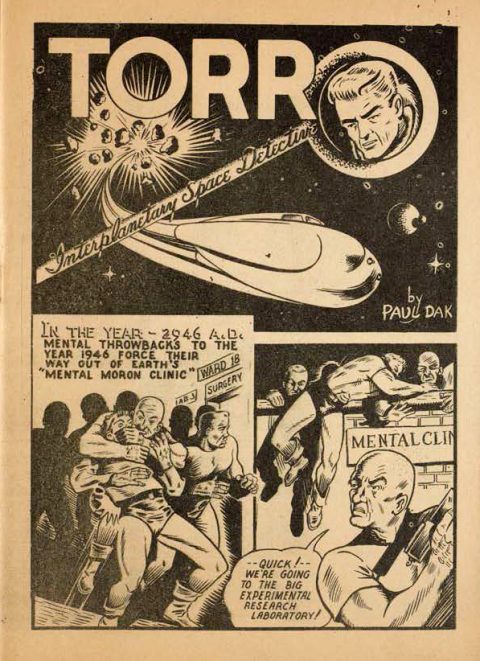
Now, Active’s standard line up for about the first 20 issues was Dixon of the Mounted, The Brain, Thunderfist, Red Thortan, and Active Jim. New features such as Dr. Blue and Blackie and Penny’s Diary were introduced in issues 18 and 19. However, none of these are left in this last issue. This seems to indicate that Cy Bell and Adrian Dingle were definitely headed in a new direction for the title and Bell Features in general
The two other new features in Active 28 were “Taffy Tumbleweed” a cartoony western created by Boddington who also did the covers for the later (1946?) unnumbered issues of Weekender Comics and Ross Mendes’ (creator of The Polka-Dot Pirate) “Top Hat ‘n’ Tales” about a crimefighter in a top hat and dinner jacket and his ward Tales. The latter is really a hiccup of a new feature that looks like it was chopped down to four pages to fit the thin slot at the end of the book and never comes through on the promise of its splash page.
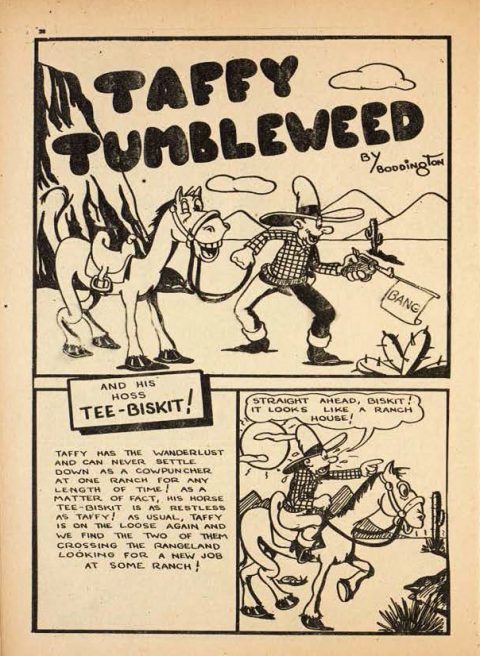
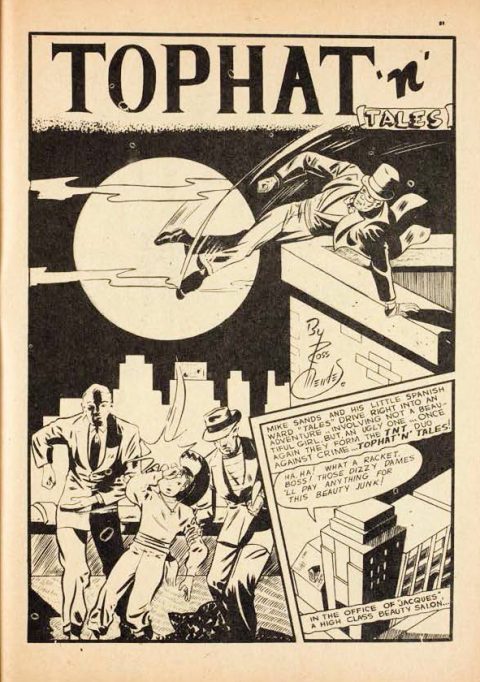
Active 28 also contains a jumble of features that were normally associated with other titles. There’s a Wing story and a Steve Storms story, both of which were usually found in Joke Comics, and a Dreamer story, featuring a character normally found in Wow Comics. This jig-saw nature of most of the last issues of Bell’s established titles seems to point to some sort of turmoil or scramble to fill out the books. Whether this was because of the impending shift towards full-colour issues and a targeted distribution below the border (maybe an overextension that was too fast and reached too far?) or just a temporary reshuffling of the Bell Features deck before going off in a new direction remains to be seen.
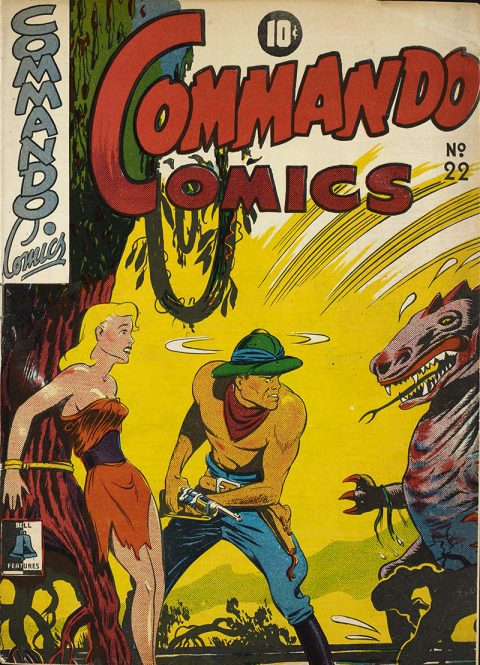
Commando Comics 22, the last issue of that title, continues this mash-up theme. The cover has nothing to do with the contents of the book. It is actually a cover illustration for the story “Ju-Ju Swamp” that appears in the final issue of Triumph Comics and should have perhaps been the cover for that book, or that story should have appeared in Commando 22. Like Active 28, this book leads off with a new feature by Adrian Dingle called “Dick Stone—United Nations Air Police.”
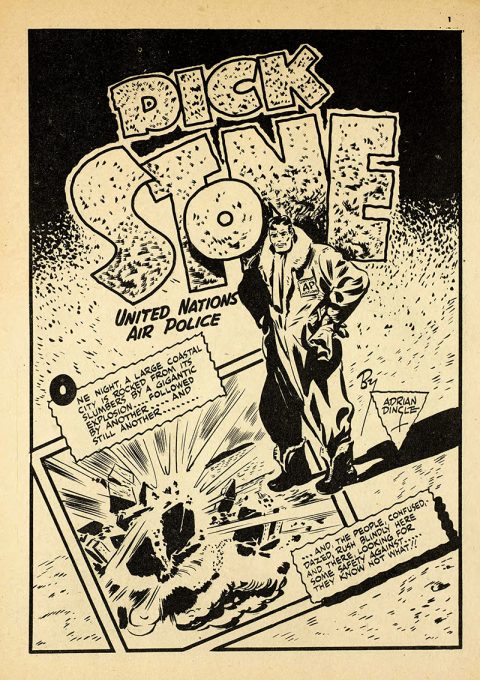
Other first-time features that round out the issue are a cartoony funny-Indian story by Bill Thomas called “Chinook,” a promising story written by Pat Hamilton (maybe a pseudonym for Adrian Dingle’s wife) and drawn by Paul Dak (who turns out to be one of the main artists during the final throws of original Bell Features material) called “Kerry Dane,” and a new story by Jerry Lazare, called “Danny and the Ghost,” about a kid and a ghost who foil a murder. The only real Commando hold-over character is Lazare’s “Tommy Tweed.” Finally, in order to get the requisite pages in, the editor throws in a Polka-Dot Pirate story. A character who usually appeared in Dime Comics.
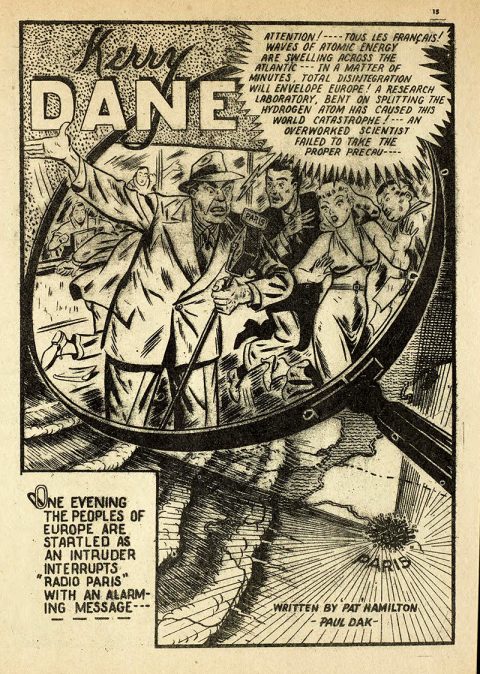
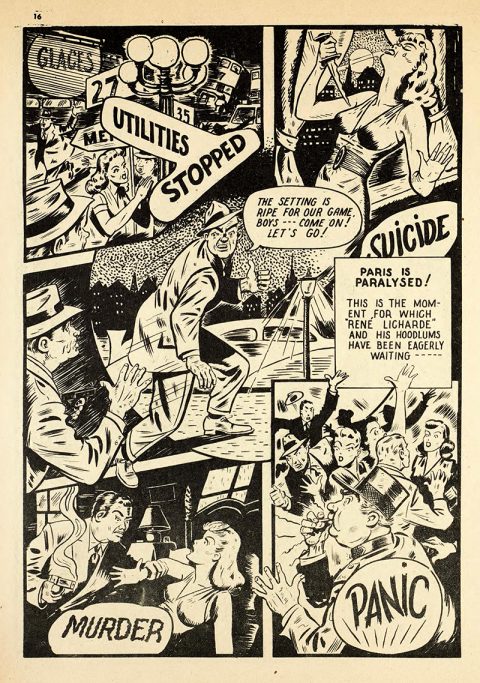
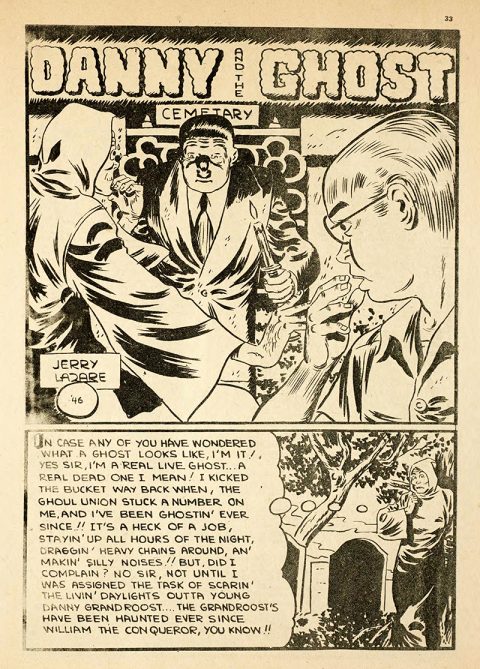
The other thing notable about Commando 22 is the back cover which shows how far Cy Bell was reaching in 1946.
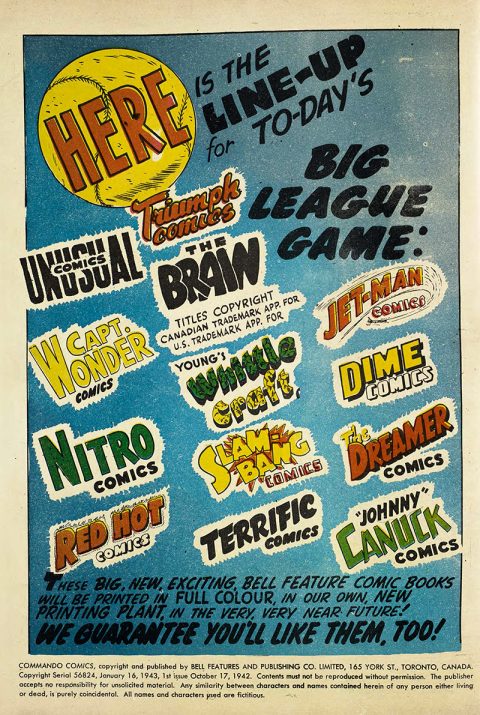
The only title on this page that was properly realized as a full-colour, original material content title, that only for one issue was Slam-Bang Comics No. 7. Though Young’s Whittle Craft was all Canadian content, it was a compendium of Bob Young’s filler from previous Bell issues. Ashcans exist for The Brain, Jet-Man, Red Hot, and, a title not on this back cover, Doodlebugs at the Library and Archives of Canada but Jet-Man and Red Hot were the only two of these ashcans that went any further and when they came out, they were full of American reprints. I think Cy Bell envisioned all the titles on this back cover to contain original Canadian material, but the other ones that eventually came out such as Unusual Comics, Triumph Comics, Johnny Canuck Comics, Nitro Comics, Dime, and Terrific Comics only contained American reprints. Captain Wonder and The Dreamer may exist as ash cans somewhere, but that’s about it.
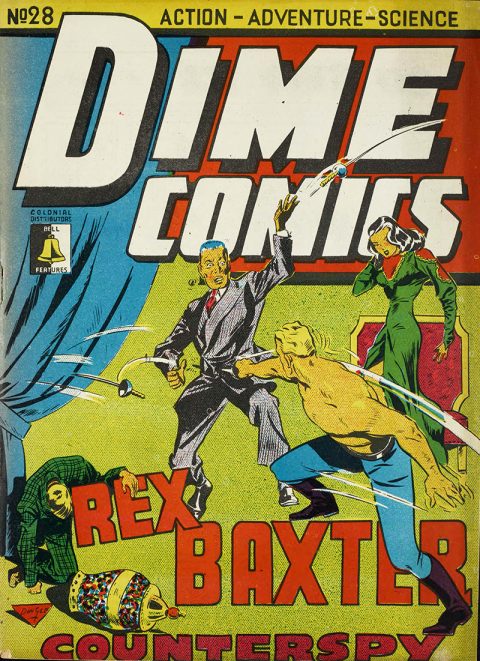
Dime 28, the last original content issue of that title, seems to be more stable in terms of the retention of its ongoing main features. “Rex Baxter,” who had been with the title since the first issue, has the cover and leads off the book while “Johnny Canuck” (who had been around in the title just as long as Rex, (but this time done by Paul Dak) closes it out. “Chik ‘n’ Fuzz,” “Nitro,” “Betty Burd,” and “Drummy Young,” had already all been around in the title for a good number of issues each. The anomaly is the closing episode of the “Major Domo and Jo-Jo” trilogy entitled “The Mysterious Mr. Mister.”
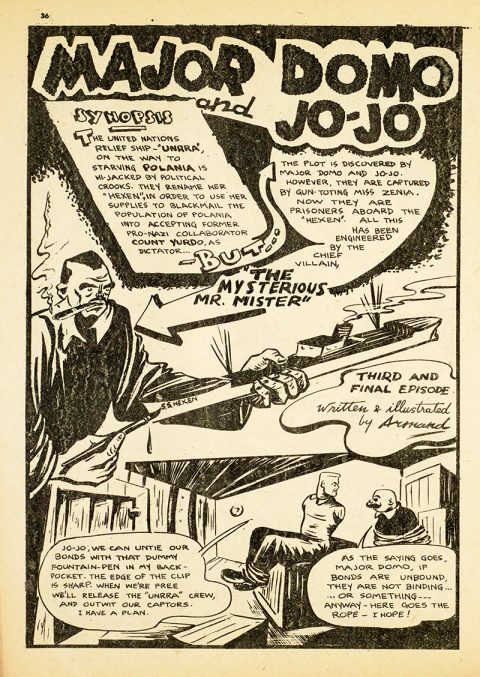
The trilogy started off in Domo’s home title with Joke Comics 25, then jumped to Triumph 30, and concluded here. Whether this signifies the order in which the books came out is not clear. Finally, the new feature in this issue is Jerry Lazare’s introduction of writer and crime fighter Eric Morgue in the noir-ish “This’ll Kill You.” This well-written little snippet ends with a panel that promises more but was never realised.
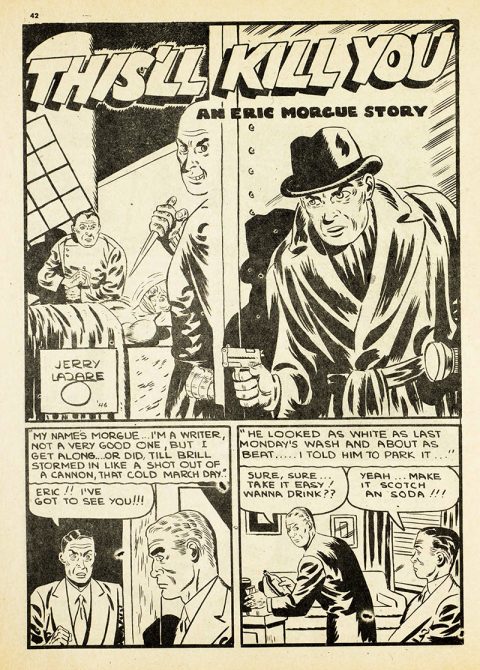
Joke 26 features “Salty Lane” on the cover to complement a “Salty Lane” story in the inside.
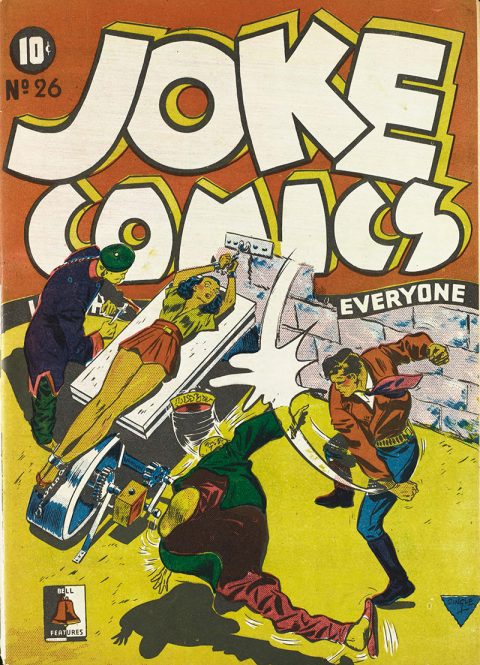
This Clayton Dexter character previously ran in Commando Comics 18-21 and this cover and corresponding story would have been better situated in the last issue of Commando Comics but mysteriously appears here. The lead-off story is another Pat Hamilton and Paul Dak collaboration on a noir private eye character named Matt Morgan.
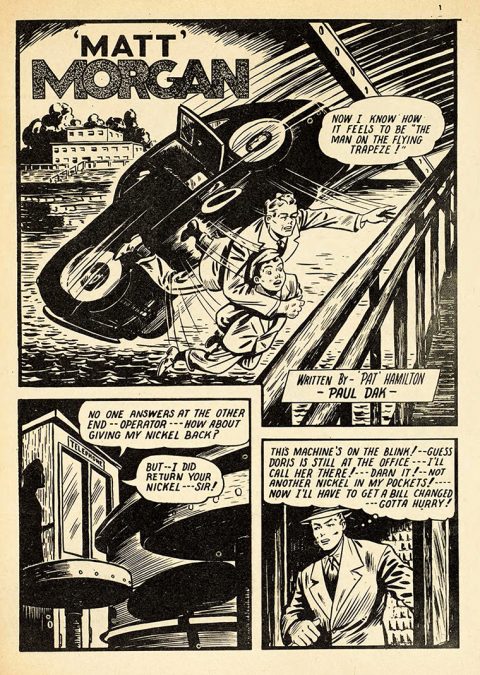
Dak would do a story by himself featuring this character in Triumph 30 and this seems to imply that Joke Comics folded before Triumph Comics. Joke 26 also has two Bill Thomas stories that never really found a home title but appeared at least once in most Bell titles. Both are cartoony with one featuring a detective called “The Mongoose” and the other a science fiction character called “Ivar of Mars.” There is also a Ross Saakel “Captain Wonder” story that would normally have been found in an issue of Triumph Comics but is mysteriously inserted here. There is also a story by R. H. Taylor about a loopy latino character called “Stompy Smith.”
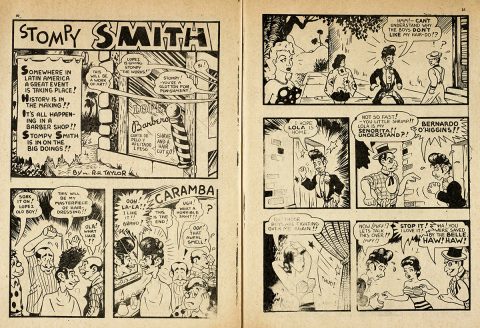
Taylor began this character in the previous issue of Joke Comics but only the two examples of this story with his slightly Al Capp-esque art exist. The remaining story is a new science fiction offering by Jerry Lazare called “Scott Stewart, Planet Pilot,” which went no further than this one episode but deserved more. Nowhere to be seen are the usual Joke Comics suspects of The Wing, Spike and Mike, and Private Stuff.
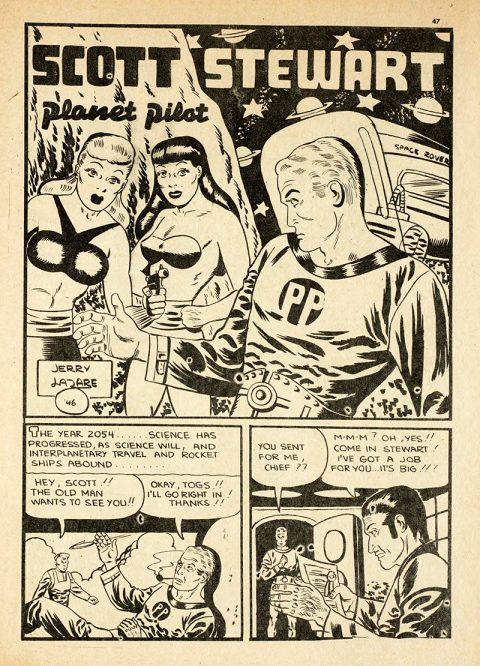
Triumph 31 is the hard-to-find last issue of that title. I can’t identify the story which is the basis for its Dingle ‘serpent fighting people in the sea cover.’
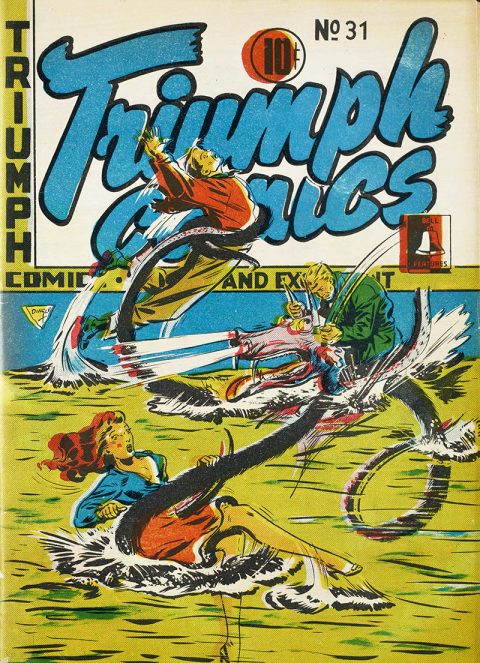
The book itself begins with the usual Nelvana story and then goes into that Fred Kelly “Ju Ju Swamp” story which is the basis for the cover of Commando 22.
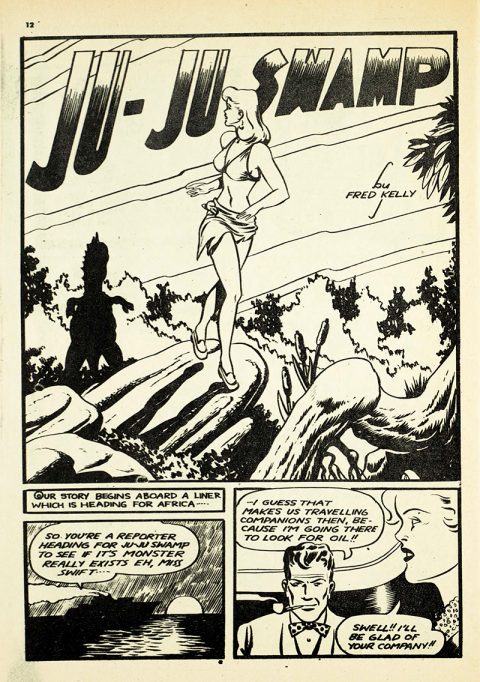
Next is a new feature by Ross Saakel called “George ‘n’ Looey” which seems to be little more that Saakel’s Spike ‘n’ Mike hobo characters from Joke Comics transformed into goofy detectives. Following this there is another new Paul Dak feature entitled “Mr. Totem.”
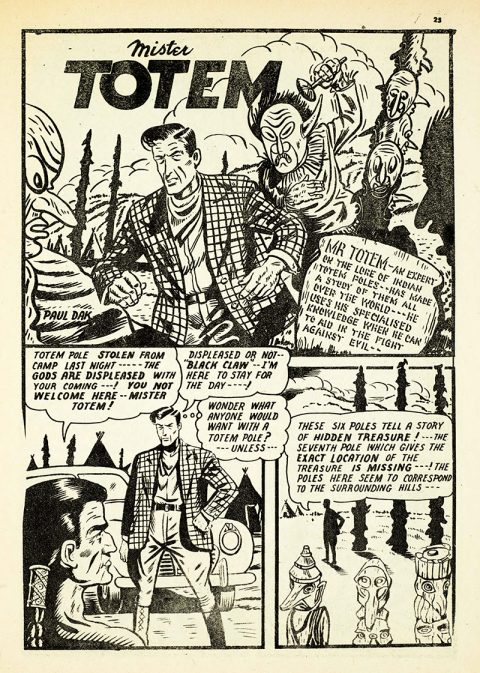
It’s about an expert in Indian totem pole lore who solves crimes and is a premise I would have liked to have seen continue, but this was the only appearance. Next is “Speed Savage” which has been a Triumph feature since the Bell Features version began with issue No. 7. The second to last story is perhaps the most important story in the book. It takes Fred Kelly’s Doc Stearne, a character usually found in Wow Comics, and, in the last panel, transforms him into Mr. Monster who has been given an additional trajectory by Michael T. Gilbert since the mid-eighties.
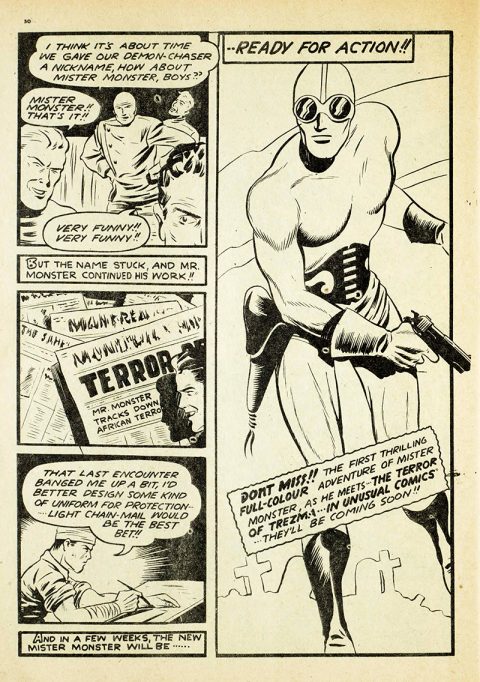
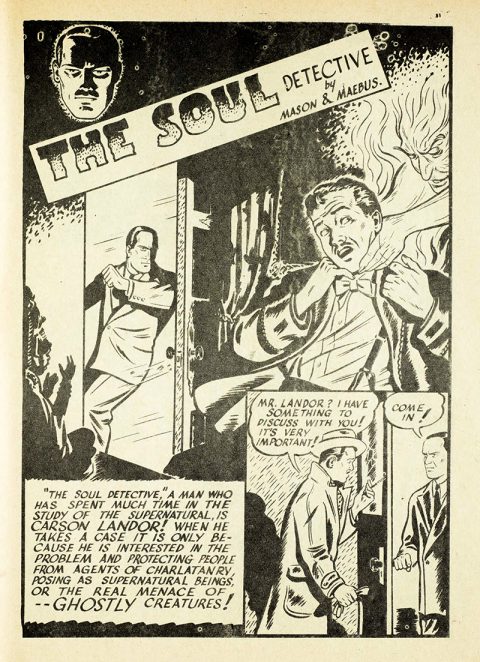
The story that closes out this final issue of Triumph Comics is supernatural thriller by Mason and Maebus entitled “The Soul Detective,” another feature that only had this one appearance. Missing in action are Triumph staples Tang, Captain Wonder, and Ace Barton.
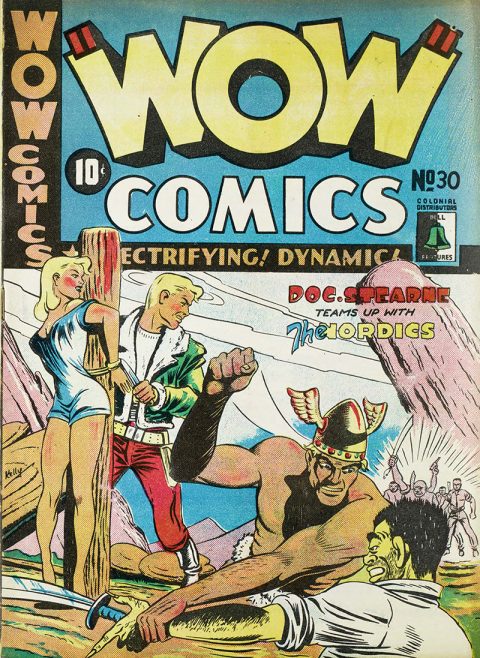
The final issue of Wow Comics, No. 30, seems to be the least messed with last issue of the bunch. It has no new or ‘experimental’ features. It runs right through the Wow stable of characters of the time with Tedd Steele’s Woody and the Wolf, Fred Kelly’s Doc Stearne and Clip Curtis, Dingle’s Penguin (who Dingle announces will become The Blue Raven with his next appearance), a post-war Jeff Waring story by Murray Karn, Lazare’s The Phantom Rider and The Dreamer, and Bill Thomas’ Ricco Vez. It comes through clean, with no jig-saw assembly.
There you have an overview of these curious last issues of original Bell Features titles. Do they show that the company was in a state of confused scramble and general turmoil when putting these type of patch-work issues out, or was it just moving in a new, post-war direction? Perhaps it was a combination of both?! Bell was full of enthusiasm during this juncture and though it promised much for the future, in the end it floundered and only that one, full-colour issue of Slam-Bang Comics No. 7 with new stories came out in 1946. F. E. Howard’s Super Duper Comics No. 3 showed, in early 1947, that there could have been more where this came from but the dream never materialized. Still, a set of all these final issues of Bell original material would be a grand but extremely difficult set to assemble.

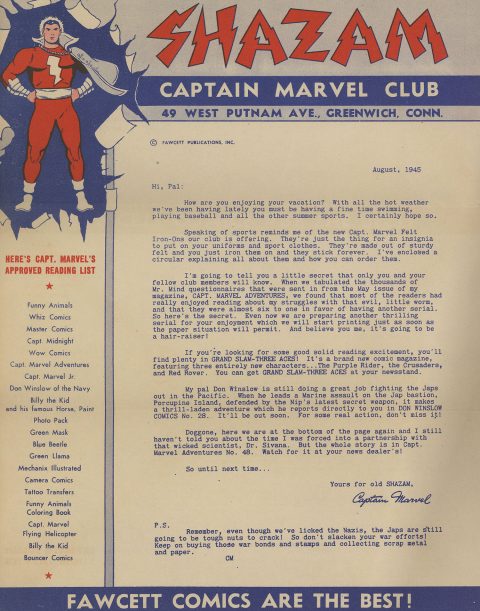
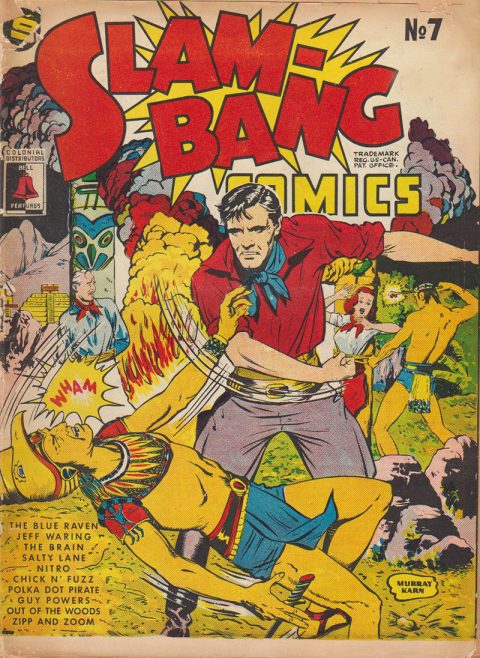
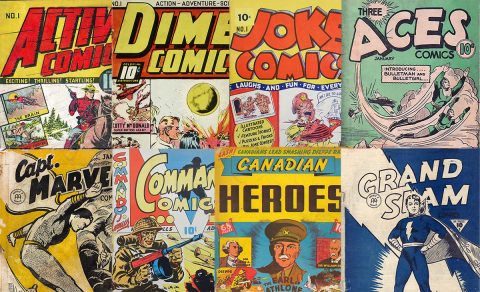
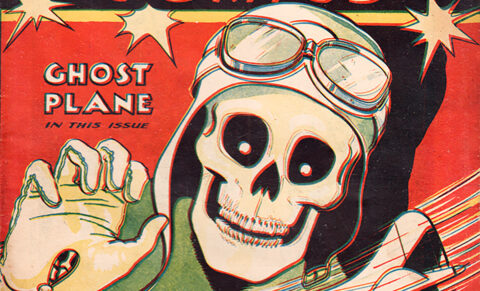
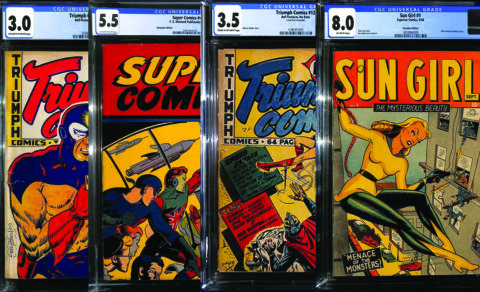
Thanks, Ivan. I always enjoy reading your essays. I am astounded at the level of research.
Thanks for the kind words, Ron. I wish I could tell a story as well as you do in things like Tower…. Just gotta keep championing these old Canadian books so we don’t lose sight of them like we have done in the past.
Another excellent column, I always look forward to reading them.
Hi Ivan,
I bought some Canadian Whites recently and cannot find an example of two of them anywhere. One is Freelance vol1 12 (which features topless women being whipped on the cover). The other is Latest Comics 3. Have you come across either of these?
i am also looking for a Space Nomad 2 and have been unable to find a picture of the cover, I particularly like stories to do with shrinking and insects/spiders (like TTA27) and have Space Nomad 1, but the story is set to continue in Space Nomad 2.
Kind regards
Richard
Thanks for your comment, Richard. The Freelance Vol. 1 No. 12, with which I am familiar, does not have the cover you describe so I’m not sure what it is and to the best of my knowledge there was only one issue of Latest Comics that fell during the WECA period. So I’m not sure what you have, but I don’t think they are WECA era books. Can you send me scans of the covers at [email protected] ? As for Space Nomads 2, it was only released as a coverless copy inteded for distribution in the UK. Keep those WECA comic questions coming and we all should learn more about these obscure books.